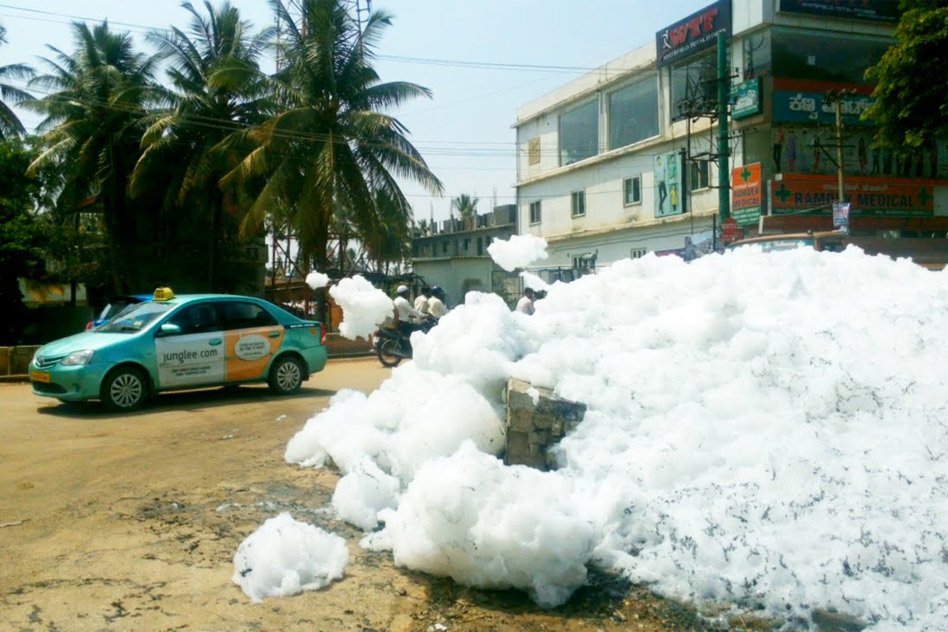Wouldn’t it be a surreal sight if we got to see a thick layer of snow on the road at a posh area of a metropolis on a hot summer day? The sight that greeted several residents of Bengaluru a few days ago was quite similar, except the fact that the apparent snow was a layer of toxic foam that emanated an obnoxious odour.
While people living around the Varthur Lake in Whitefield, Bengaluru are accustomed to seeing foam in the lake every summer, this year things went out of control when excess foam overflowed into the roads and disrupted traffic. The associated health hazards are plenty, as well, as the foam has been identified to be a mixture of detergent and human waste.
While the concerned government bodies have begun the usual blame game, it’s important that we analyze the lacunae in our pollution control measures that led to this hazard:
• Nearly 500 million litres of untreated sewage water flows into the lake every day leaving it extremely polluted. Consequently, increased levels of ammonia and phosphates with very little dissolved oxygen in the water caused such foams.
• Increased usage of non-bio-friendly detergents adds to the phosphate content in sewage. India has certain standards for detergents but there are no regulations to impose these upon manufacturers.
• Number of lakes in greater Bengaluru and several other parts of India is facing an alarming decline, and existing lakes are shrinking in size due to encroachment. Figures clearly indicate the ineffectiveness of the several wetland protection and anti-encroachment policies we have.
Authorities have said it will take at least a year to clean the Varthur Lake. However, the earlier proposal of building 25 sewage treatment plants across Bengaluru is likely be fulfilled by this year’s end, and this is expected to improve the condition of the city’s water bodies. This bizarre phenomenon in India’s Silicon Valley is perhaps a reminder that it’s high time that we realized the adverse consequences of environmental pollution and had strict laws against activities that will tend to threaten our very existence in the long run.










